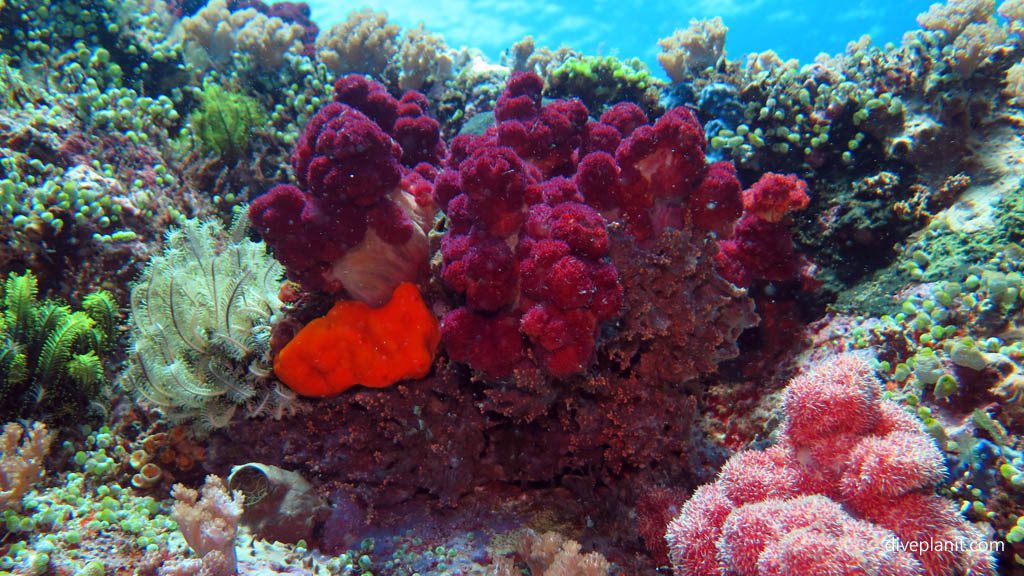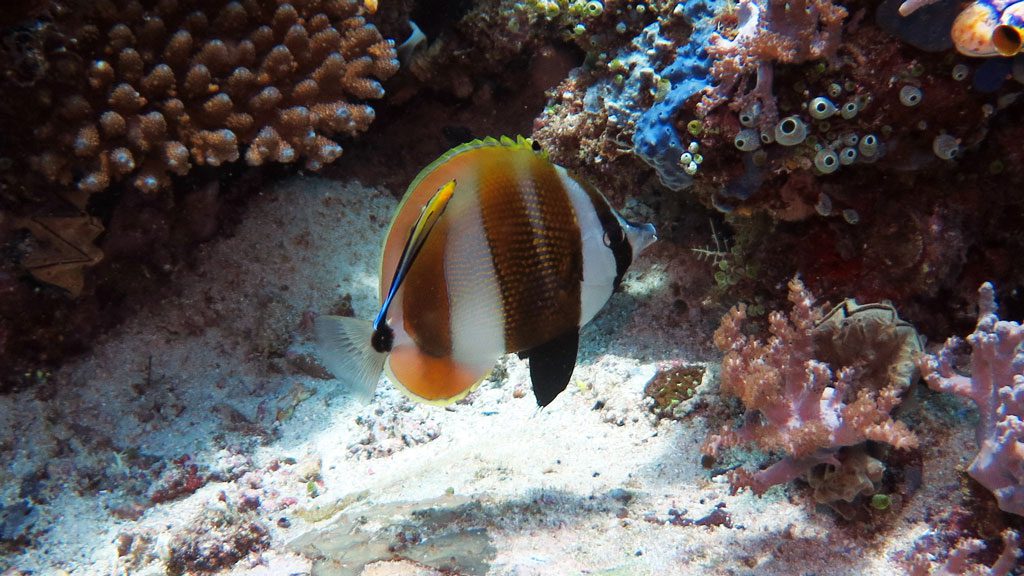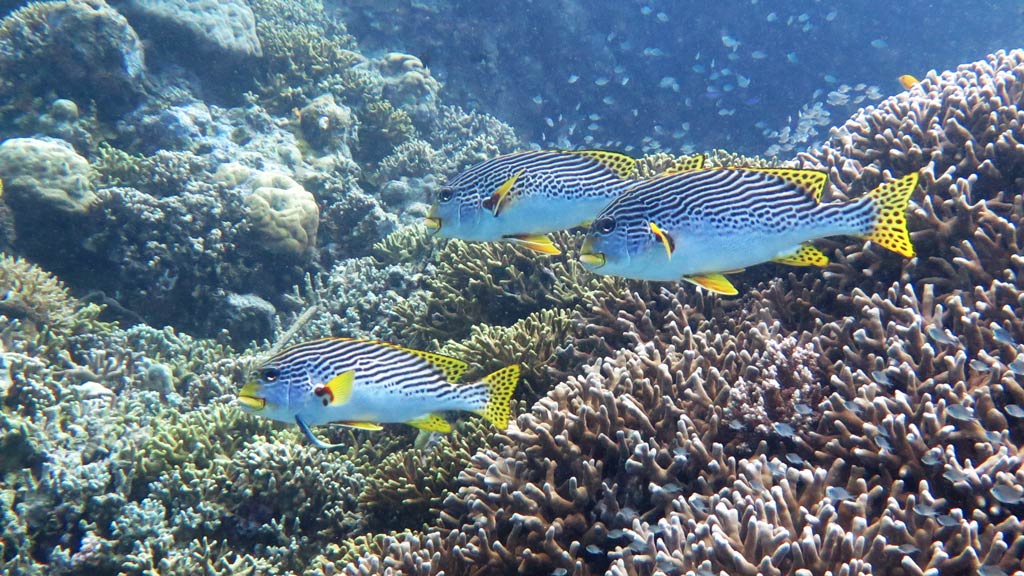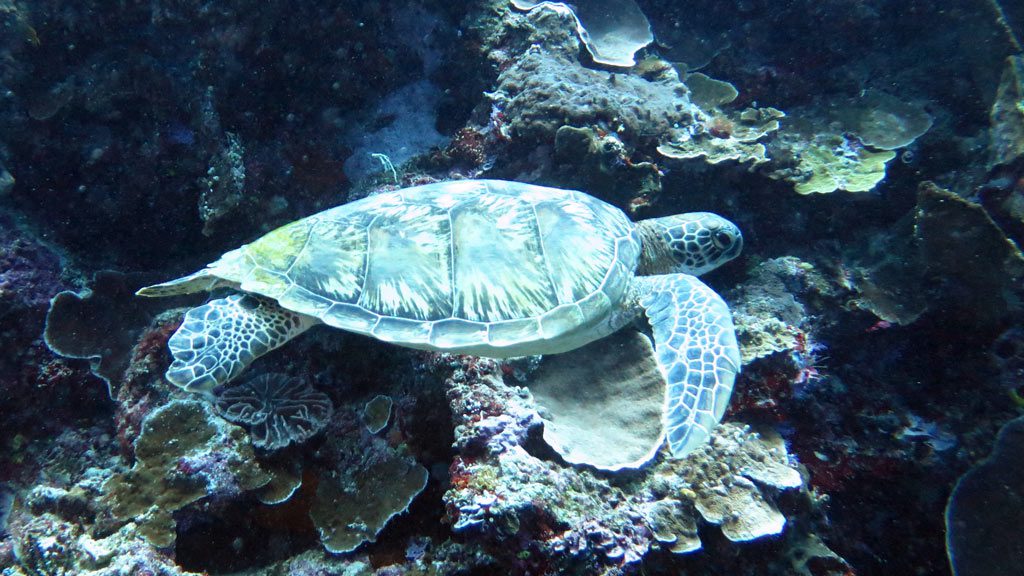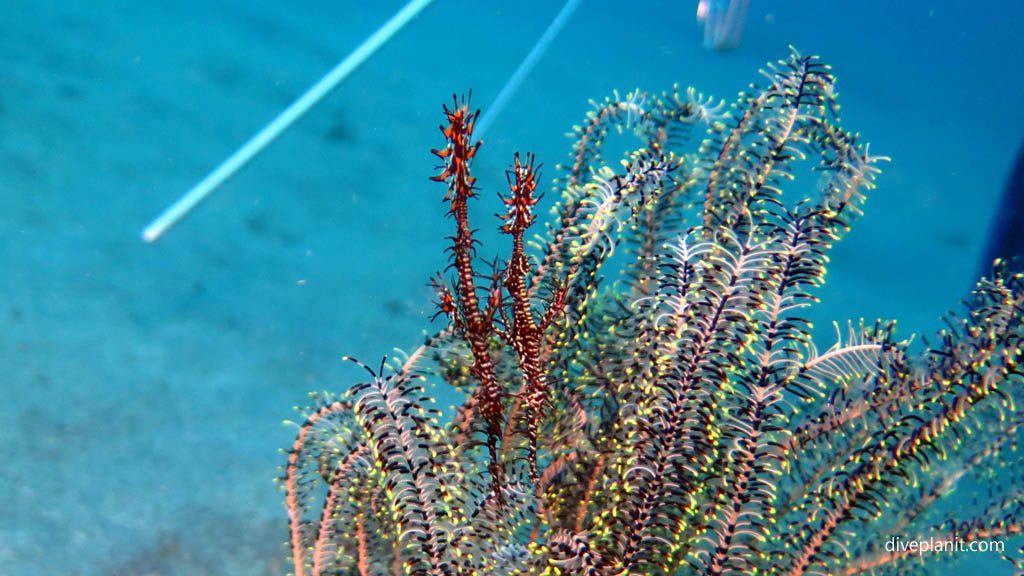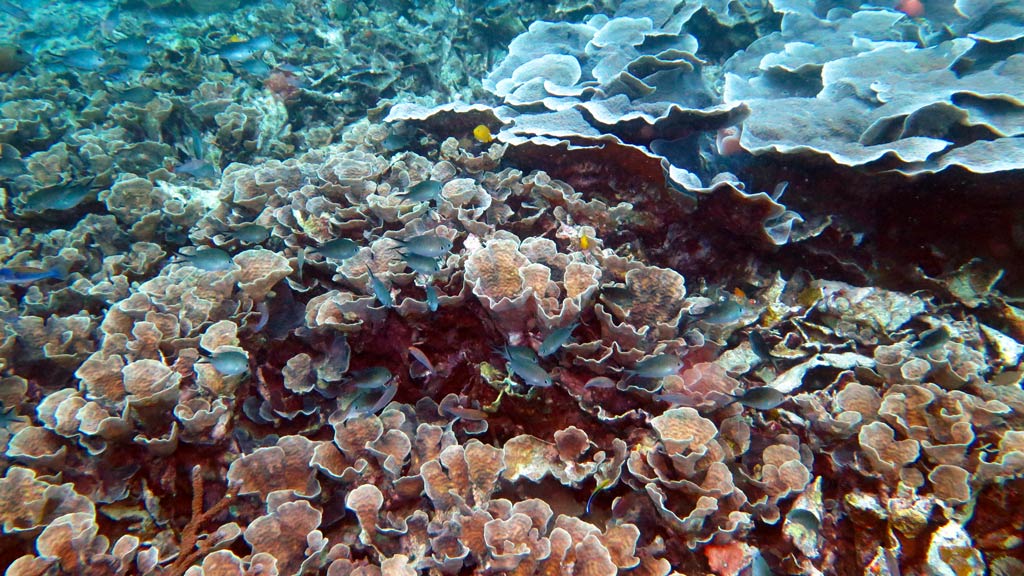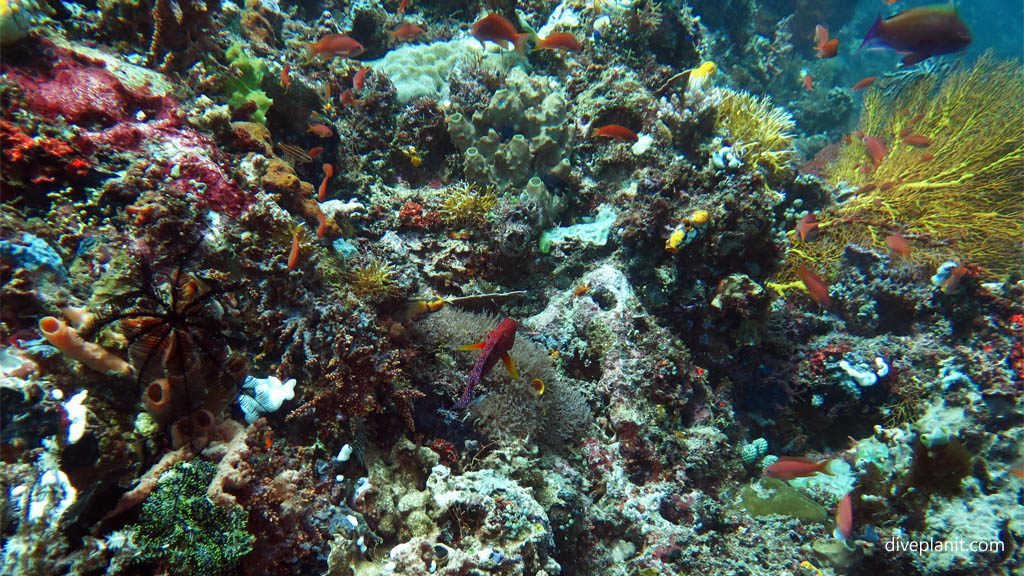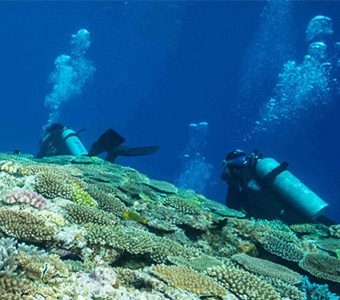So here I am in Ibu’s Secret Garden diving North Sulawesi. Ibu being the Indonesian term of endearment for Mother and Secret Garden meaning a reef so rich in pristine corals and marine life that Ibu decided quite rightly to keep this very special place a secret.
It’s very much like an overgrown, untended garden: there’s a big cabbage patch, but with uninvited staghorn cropping up where it pleases. Stretches of xenia, their petals like mouths constantly feeding, dotted with sponges of all shapes and sizes, some adorned with bright yellow feather stars, some hiding lionfish inside them. Strewn around are corallimorphs and anemones, leather corals and soft pink corals, purple sponge pipes, heads of soft bubbly-white corals and big brain shaped corals complete with deeply engrained maze patterns.
Like almost all the sites diving North Sulawesi, the water is warm and clear and it’s bright and sunny it seems like you can see for miles in every direction. There is no current, so we just amble around moving on to the next most interesting coral structure or following a juvenile sweetlips as it wriggles its way through the terrain. After a while I’m 100% absorbed in that place and everything else including time has melted away. It’s because of places like this that we learn to dive in the first place.
Observing the reef society go about its daily business is timeless. With anticipation I watch a nudibranch crawl, stretch, attach and finally cross from one little coral ledge to another (phew – he made it without falling) – a grand distance of about 6 cm in about six minutes. A blue-yellow ribbon Eel comes swaying and gulping from his homely little hole, then retracts and out of the corner of my eye I see a dwarf hawkfish. He’s been watching me all this time, deciding exactly when to make a swift exit.
And ultimately, the needle hits the red with that polite reminder that I’m not a fish and the surface is the place I should be heading right now.
Still, it’s amazing to think how much we are able to pack in, in just 5 short days in North Sulawesi. Diving with Thalassa Resort, it’s pretty easy to get three dives in each day and still feel like you’re on holiday. From the moment we are collected at Manado airport for the 30 minute drive to resort it felt like we are in capable hands.
Our room is ridiculously spacious with a view across the bay and a 30 second walk to the resort centre where the restaurant, bar, reading area, and the all-important Dive Board is located. There’s a map on the opposite wall showing the 100+ dive sites available at the resort, and the Dive Board lists the locations where each of the three dive boats are going tomorrow.
Bunaken Island is first on our list. It’s a marine reserve and the angular island is full of corners (or points) with quite steeply shelving walls and ledges, exactly the kind of place you’d find a resting turtle. It’s a place of big things: big plates of cabbage coral, big tables of acropora, big sea fans, big barrel sponges and big stove pipe tube sponges – befitting a church organ. Big brain corals complete with hairy squat lobsters and big sea anemones replete with skunk clownfish.
Most of the dives are lazy drifts, so gentle that it’s easy to stop and observe closely or photograph as you drift by, but with finning being completely optional.
On the second afternoon I’m persuaded to go diving muck diving, after all North Sulawesi is (one of the many?) places that claim to have invented the expression. I confess I’m not a fan of small things; once it gets much smaller than a ghost pipefish I’m over it. Still, it’s obvious the dive guides are well-seasoned Critter Hunters, as they point out all sorts of tiny things: juveniles, dwarf lionfish, and a baby octopus about the size of my pinkie.
On our final day, some people decided to take a day out to go to see the tarsiers, which I can only describe as faintly evil-looking wizen old ladies able to turn their heads through 180°. Apparently they can be quite territorial and can kill each other with high pitched sonic scream. Give me a fish any day!
We opt for the day trip up to Bangka instead, which turns out without doubt to be the highlight of our stay: around the island and the adjacent point of North Sulawesi lie gardens of coral reefs tens of metres wide running along the coastline. There are so few divers make it up here and those that do are experienced enough to know how to leave it exactly as they found it.
The diversity is glorious – but not surprising as we’re smack bang at the absolute epicentre of the Coral Triangle. Countless colonies of coral, innumerable number of nudis from the dorid to the flamboyant, various varieties of fish and eels, from rock mover wrasse to stonefish, morays and ribbon eels, even polyclad flatworms hitching a ride on a sea cucumber. Even the sea stars have half a dozen different species on the one dive.
And the finale that day was to drop into Ibu’s Secret Garden on the way back, but you know all about that by now. It’s a bittersweet moment as we finally ascend, and I’m trying to imprint that last image of the Garden on my mind – something to think of when we get home and are presented with more confronting images of reefs in other regions being bleached to oblivion by climate change.
It’s also the very last dive of our short dive holiday – just four days in North Sulawesi diving the Bunaken Marine Reserve, my first real muck dive and Bangka Island. But I know I’ll be back – it’s just a question of when.
Manado is the gateway to North Sulawesi, with multiple flights daily from Denpasar (Bali). Right now Thalassa Resort has a special deal enabling you to dive the best – both east and west – of North Sulawesi including the famous Lembeh Strait.




